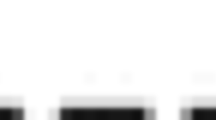Abstract
Edgington has proposed a degree-theoretic account of vagueness that yields a highly elegant solution to the sorites paradox. This paper applies her account to the paradox of Theseus’ ship, which is generally classified among the paradoxes of material constitution and not as a sorites paradox.
Similar content being viewed by others
Notes
See Belohlavek and Klir (2011) for a useful overview of the field of fuzzy logic.
An anonymous referee remarked that the price may not really be so modest, considering that the solution goes at the expense of the unrestricted transitivity of the logical consequence relation. While this is correct, note that we still do have transitivity in the limited form that whenever \(\Gamma \) entails \(\varphi \), and \(\Delta \) and \(\varphi \) together entail \(\psi \), then the union of \(\Gamma \) and \(\Delta \) entails \(\psi \), provided that union is not too large.
Some may intuit that, for instance, \(v\bigl [\mathrm{SS}(s_0,s_5)\bigr ]\) can be lower than \(v\bigl [\mathrm{SS}(s_{n-10},s_n)\bigr ]\), even though \(s_0\) and \(s_5\) have more planks in common than have \(s_{n-10}\) and \(s_n\). But surely those who have this intuition will still agree that \(v\bigl [\mathrm{SS}(s_i,s_j)\bigr ]\leqslant v\bigl [\mathrm{SS}(s_i,s_{j+k})\bigr ]\), which is enough for present concerns. (Thanks to an anonymous referee here.)
This may need the stipulation that all planks be more or less equal in size, or contribute equally to the stability of the ship, or some such. Naturally, we are free to make all such stipulations. Some might want to take an epistemicist position here and claim that there actually is a plank such that replacing that plank yields a different ship, although we do not, and cannot, know which plank it is [see, e.g., Williamson (1994)]. I doubt that this position will garner more support in the present context than it has done in the literature at large.
While the view that indicative conditionals have the truth conditions of their material counterparts is no longer as popular as it once was, it is to be noted that even some opponents of this view grant that the material conditional captures the right interpretation of conditionals occurring in logico-mathematical contexts; see, e.g., Edgington (1992, p. 198) and Bennett (2003, p. 97). Arguably, in considering the current paradox we find ourselves in precisely such a context.
Equation (8) holds only in general, because \(v\bigl [\mathrm{SS}(s_i,s_j)\bigr ]\) is not strictly decreasing in \(\left| i-j\right| \), so that it may be that, for some \(i\), \(v\bigl [(\mathrm{SS}(s_0,s_i)\bigr ]=v\bigl [\mathrm{SS}(s_i,s_{i+1})\bigr ]\), in which case \(v\bigl [\lnot \bigl (\mathrm{SS}(s_0,s_i)\wedge \mathrm{SS}(s_i,s_{i+1})\bigr )\vee \mathrm{SS}(s_0,s_{i+1})\bigr ]=1\).
This is easy to check for oneself, but see, for a proof, Hailperin (1996, p. 204).
See Hailperin (1996, pp. 200–203). Note that \(\Pr (A\rightarrow B)=\Pr (\lnot A\vee B)\geqslant 1-\Pr (A)\), so that \(x+y\geqslant 1\), and hence the lower bound is automatically greater than or equal to 0.
Note that for no instance \(x=y=1\).
References
Achinstein, P. (2001). The book of evidence. Oxford: Oxford University Press.
Adams, E. W. (1975). The logic of conditionals. Dordrecht: Reidel.
Belohlavek, R., & Klir, G. J. (2011). Fuzzy logic: A tutorial. In R. Belohlavek & G. J. Klir (Eds.), Concepts and fuzzy logic (pp. 45–87). Cambridge, MA: MIT Press.
Bennett, J. (2003). A philosophical guide to conditionals. Oxford: Oxford University Press.
Douven, I., & Decock, L. (2015). What verities may be. Mind, in press.
Edgington, D. (1992). Validity, uncertainty and vagueness. Analysis, 52, 193–204.
Edgington, D. (1997). Vagueness by degrees. In R. Keefe & P. Smith (Eds.), Vagueness: A reader (pp. 294–316). Cambridge, MA: MIT Press.
Gärdenfors, P. (2000). Conceptual spaces. Cambridge, MA: MIT Press.
Foley, R. (1993). Working without a net. Oxford: Oxford University Press.
Hailperin, T. (1996). Sentential probability logic. Bethlehem, PA: Lehigh University Press.
Hawthorne, J., & Bovens, L. (1999). The preface, the lottery, and the logic of belief. Mind, 108, 241–264.
Kyburg, H. (1970). Conjunctivitis. In M. Swain (Ed.), Induction, acceptance and rational belief (pp. 55–82). Dordrecht: Reidel.
Smith, N. J. J. (2005a). Vagueness as closeness. Australasian Journal of Philosophy, 83, 157–183.
Smith, N. J. J. (2005b). A plea for things that are not quite all there: Or, is there a problem about vague composition and vague existence? Journal of Philosophy, 102, 381–421.
Smith, N. J. J. (2008). Vagueness and degrees of truth. Oxford: Oxford University Press.
Williamson, T. (1994). Vagueness. London: Routledge.
Acknowledgments
I am grateful to Richard Dietz, Christopher von Bülow, and two anonymous referees for very helpful comments on a draft version of this paper.
Author information
Authors and Affiliations
Corresponding author
Rights and permissions
About this article
Cite this article
Douven, I. Verities, the sorites, and Theseus’ ship. Synthese 194, 3867–3878 (2017). https://doi.org/10.1007/s11229-015-0724-2
Received:
Accepted:
Published:
Issue Date:
DOI: https://doi.org/10.1007/s11229-015-0724-2




